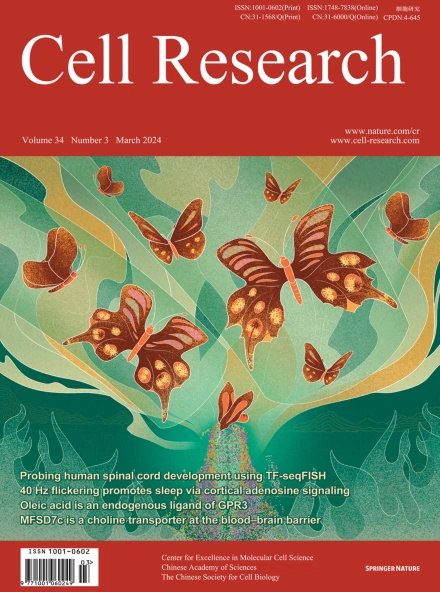
Advanced Search
Submit Manuscript
Advanced Search
Submit Manuscript
Volume 34, No 3, Mar 2024
ISSN: 1001-0602
EISSN: 1748-7838 2018
impact factor 17.848*
(Clarivate Analytics, 2019)
Volume 34 Issue 3, March 2024: 193-213 |
Decoding the spatiotemporal regulation of transcription factors during human spinal cord development
Yingchao Shi1,†,* , Luwei Huang2,3,† , Hao Dong2,3,† , Meng Yang4,† , Wenyu Ding5 , Xiang Zhou2,3 , Tian Lu2,3 , Zeyuan Liu4 , Xin Zhou4,5 , Mengdi Wang2,3 , Bo Zeng4 , Yinuo Sun4 , Suijuan Zhong4,5 , Bosong Wang5 , Wei Wang2,3 , Chonghai Yin4 , Xiaoqun Wang2,4,5,* , Qian Wu4,5,*
1Guangdong Institute of Intelligence Science and Technology, Guangdong, ChinaThe spinal cord is a crucial component of the central nervous system that facilitates sensory processing and motor performance. Despite its importance, the spatiotemporal codes underlying human spinal cord development have remained elusive. In this study, we have introduced an image-based single-cell transcription factor (TF) expression decoding spatial transcriptome method (TF-seqFISH) to investigate the spatial expression and regulation of TFs during human spinal cord development. By combining spatial transcriptomic data from TF-seqFISH and single-cell RNA-sequencing data, we uncovered the spatial distribution of neural progenitor cells characterized by combinatorial TFs along the dorsoventral axis, as well as the molecular and spatial features governing neuronal generation, migration, and differentiation along the mediolateral axis. Notably, we observed a sandwich-like organization of excitatory and inhibitory interneurons transiently appearing in the dorsal horns of the developing human spinal cord. In addition, we integrated data from 10× Visium to identify early and late waves of neurogenesis in the dorsal horn, revealing the formation of laminas in the dorsal horns. Our study also illuminated the spatial differences and molecular cues underlying motor neuron (MN) diversification, and the enrichment of Amyotrophic Lateral Sclerosis (ALS) risk genes in MNs and microglia. Interestingly, we detected disease-associated microglia (DAM)-like microglia groups in the developing human spinal cord, which are predicted to be vulnerable to ALS and engaged in the TYROBP causal network and response to unfolded proteins. These findings provide spatiotemporal transcriptomic resources on the developing human spinal cord and potential strategies for spinal cord injury repair and ALS treatment.
https://doi.org/10.1038/s41422-023-00897-x